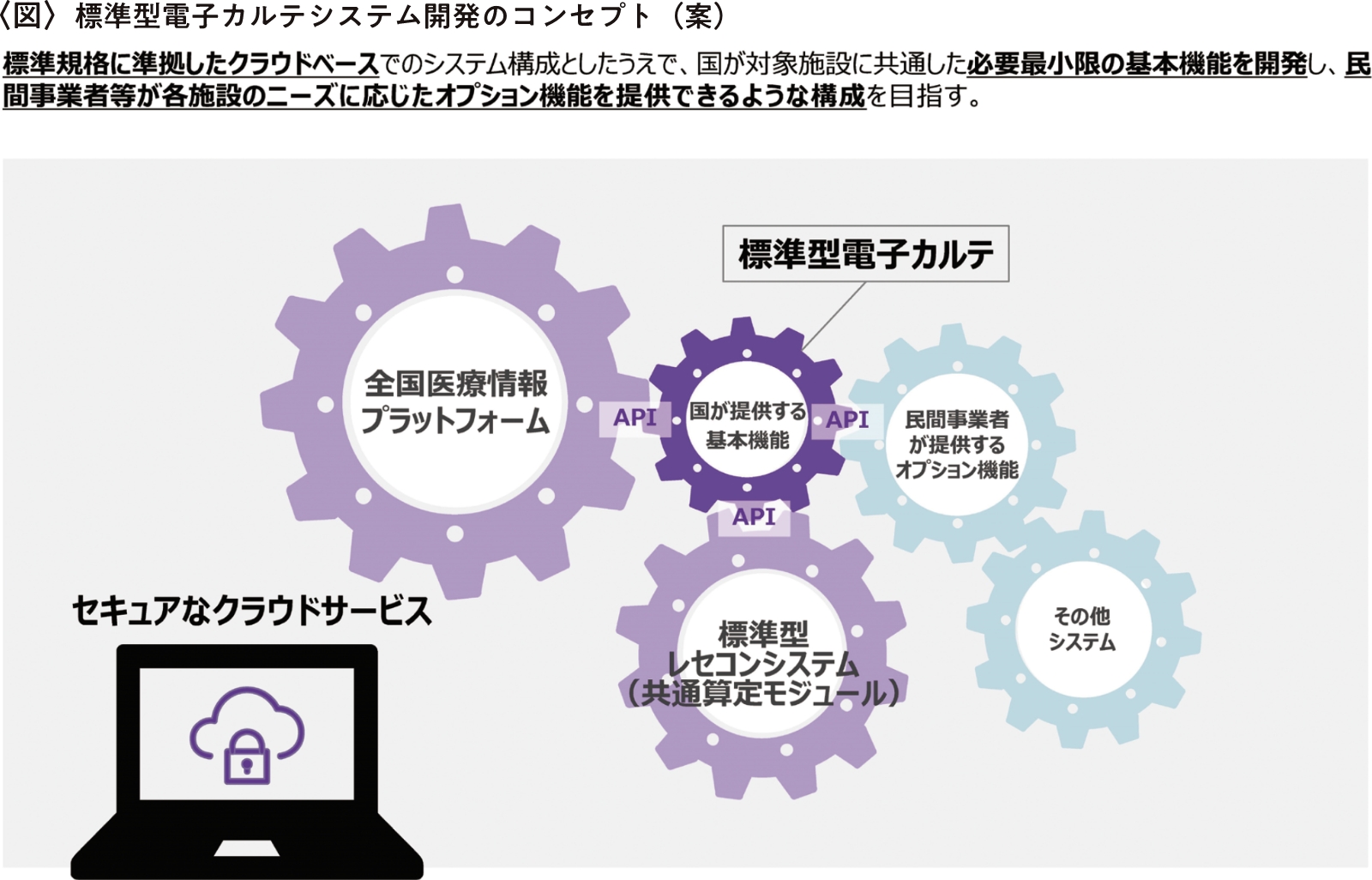As the government strongly promotes medical DX as a national policy, individual medical institutions are being asked to respond to medical DX one after another, starting with the introduction of systems such as online qualification confirmation. Full-scale operation of standard electronic medical records is scheduled for 2026, and medical institutions are showing great confusion. Here, we will explain the purpose of the development and spread of standard electronic medical records, the associated impact on existing electronic medical records, and what medical institutions should do now.

As you know, the government is promoting medical DX (digital transformation). The Ministry of Health, Labor and Welfare has established the "Medical DX Reiwa Vision 2030 Ministry of Health, Labor and Welfare Promotion Team" and is promoting efforts centered on three pillars: the creation of a national medical information platform, the standardization of electronic medical record information and the development of standard electronic medical records, and DX of medical fee revisions.
The first initiative was the introduction of an "online qualification verification system," which enabled the linking of cloud databases with medical institutions. Next, the "electronic prescription management service" was introduced, and information sharing began. Currently, the foundations of a national medical information platform are being built, and the "electronic medical record information sharing service" is about to be launched.
While the government is working on this, the penetration rate of electronic medical record systems in medical institutions is around 50%, and while large hospitals have almost completed their introduction, one in two small and medium-sized hospitals and clinics have not yet introduced them. In order to realize the medical digital transformation that the government is aiming for, the major prerequisite is the 100% penetration of standardized electronic medical records, so this situation needs to be resolved as soon as possible. That is why efforts are being made to develop a standardized electronic medical record.
The development of the standard electronic medical record is being carried out by a company commissioned by the Digital Agency, the product owner, with technical support from multiple electronic medical record manufacturers. The schedule is as follows: research and specification organization in FY2023, procurement of the alpha version and system development in FY2024, implementation of a model project (start of alpha version provision) in FY2025, and full-scale operation in FY2026.
However, this development will not mean that existing electronic medical record systems will become completely unusable. After the model of the standard electronic medical record system currently under development is made public, manufacturers will be able to use the technology to improve their existing electronic medical record systems, which will also be recognized as meeting the national standards (see figure).
On the other hand, since non-standardized electronic medical records may become unusable, medical institutions that have already introduced electronic medical records will have to purchase new ones. Although the government is expected to provide subsidies for this, the source of funds is tax money, so it seems that the full amount will not be subsidized.
In the first place, there are concerns that it will cost a huge amount of money to improve or develop an electronic medical record system equipped with a standard electronic medical record. In addition, since it will be managed by the cloud, there will be a high dependency on the Internet, and cyberterrorism measures will need to be even stricter. Furthermore, the government is requesting that manufacturers equip their systems with a function that allows the sharing of three documents (health check result report, medical information provision form, discharge summary) and six pieces of information (name of injury or illness, allergies, infectious diseases, drug contraindications, tests, prescriptions). If these problems and requests are addressed, the improvement and development costs of an electronic medical record equipped with a standard electronic medical record will naturally be high.
Given this situation, there are two things that medical institutions should do now. First, it is important that medical institutions that have not yet introduced electronic medical records switch to electronic medical records as soon as possible, without waiting for the completion of the development of a standard electronic medical record. If standard electronic medical records become mandatory, the balance between demand and supply will be disrupted, and there is a risk that even if they want to switch to electronic medical records, they will not be able to do so due to a shortage of manpower at manufacturers.
On the other hand, medical institutions that have already introduced electronic medical records will need to work with manufacturers to gradually adapt to online eligibility verification systems and electronic prescription management services.
Some experts recommend that once the above has been established to a certain extent, the "Medical DX Promotion System Preparation Surcharge (8 points)" newly established in the medical fee revision for fiscal year 2024 should be applied for. This surcharge requires that facilities participate in an electronic medical record information sharing service, but as this service is likely to become mandatory in the near future, it is wise to get ahead of the curve, which is a major reason why it is recommended to apply for it.
In promoting medical digital transformation, the spread of electronic medical records throughout the country is an important mission for the country. It is essential that individual medical institutions prepare in order not to be left behind by this trend.

Edited from "1st Standard Electronic Medical Record Review Working Group Materials" (Ministry of Health, Labor and Welfare)
(https://www.mhlw.go.jp/content/10808000/001178649.pdf)
Interviewee: Daisuke Onishi (CEO of MICT Consulting)